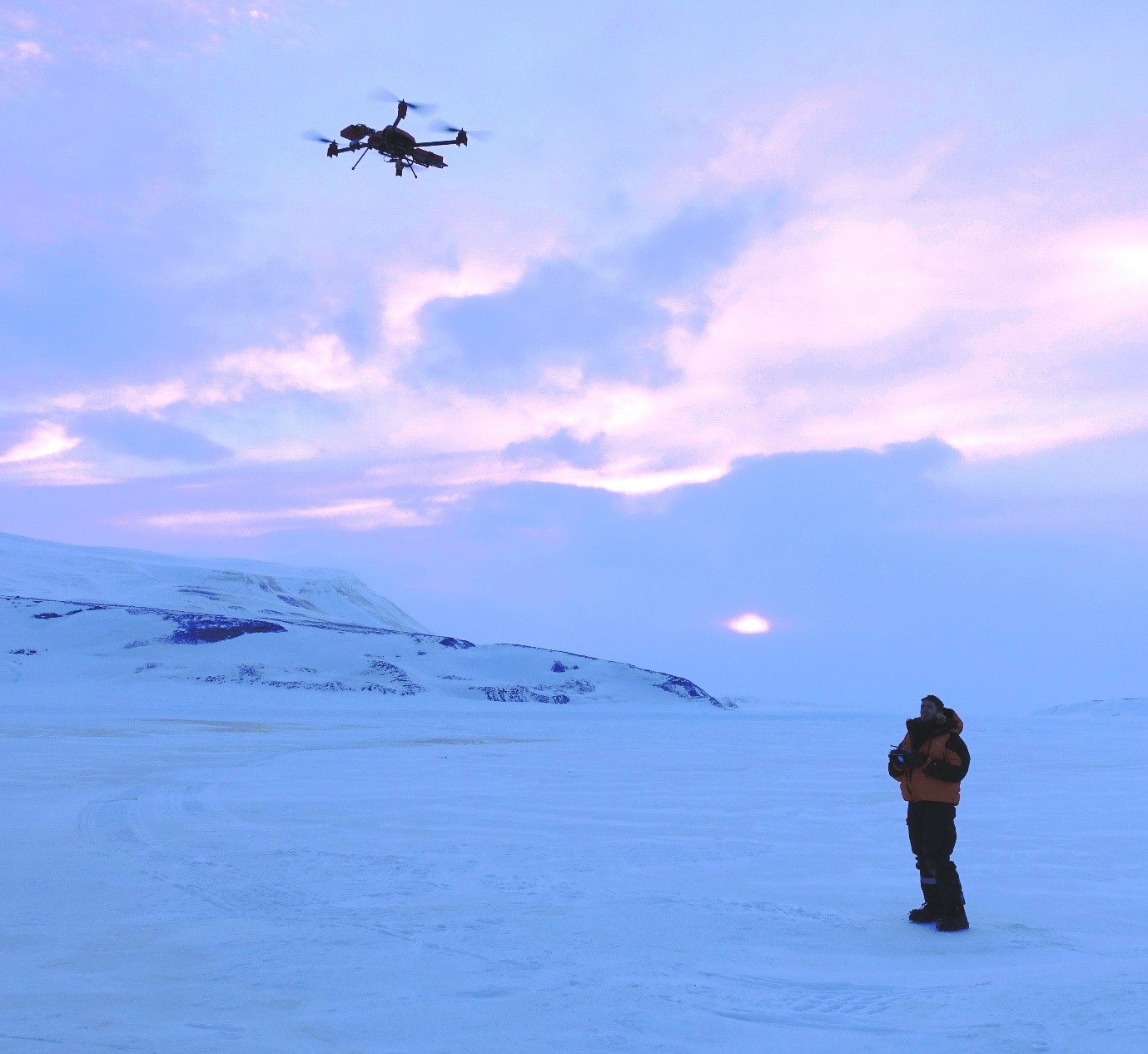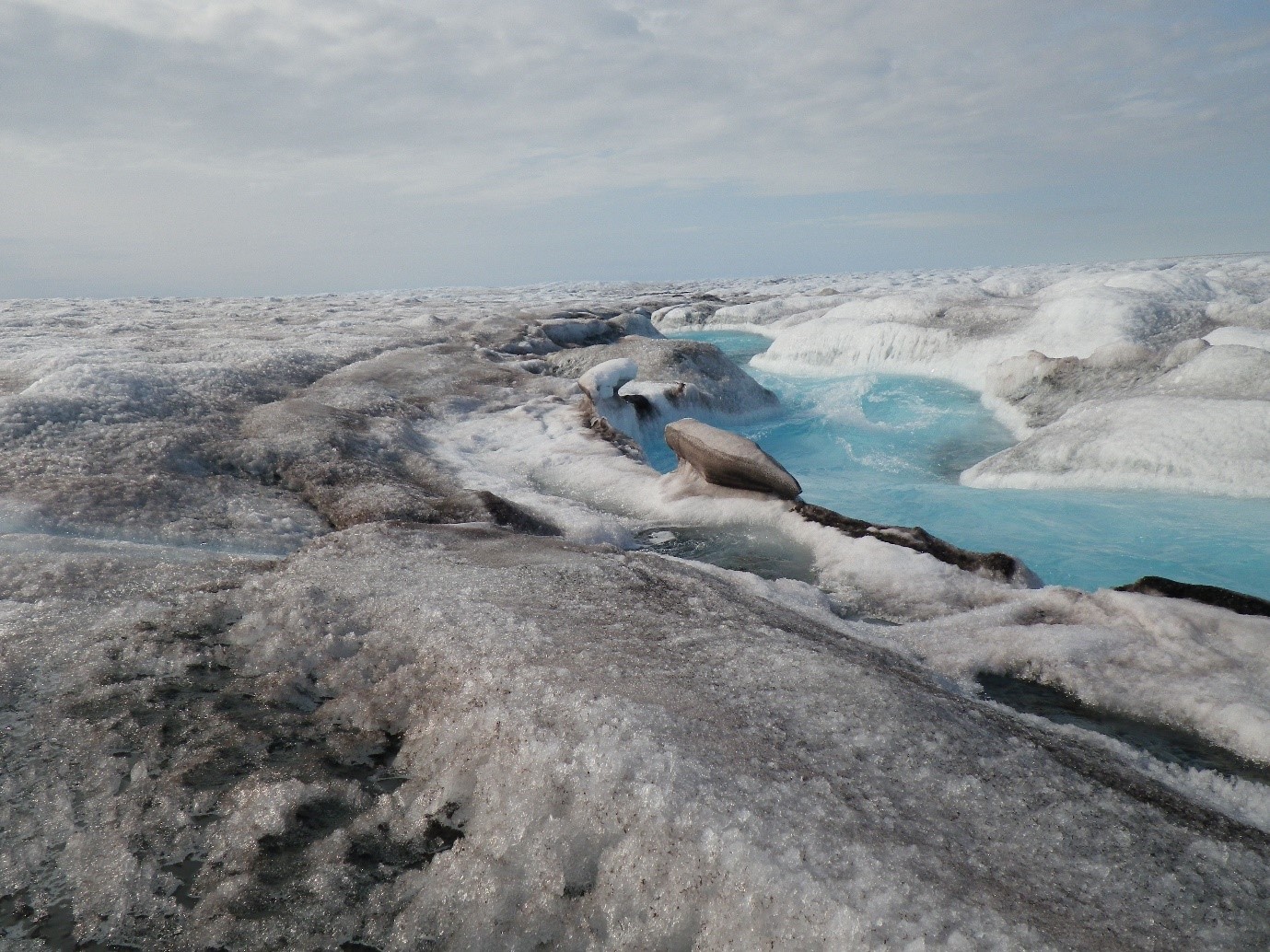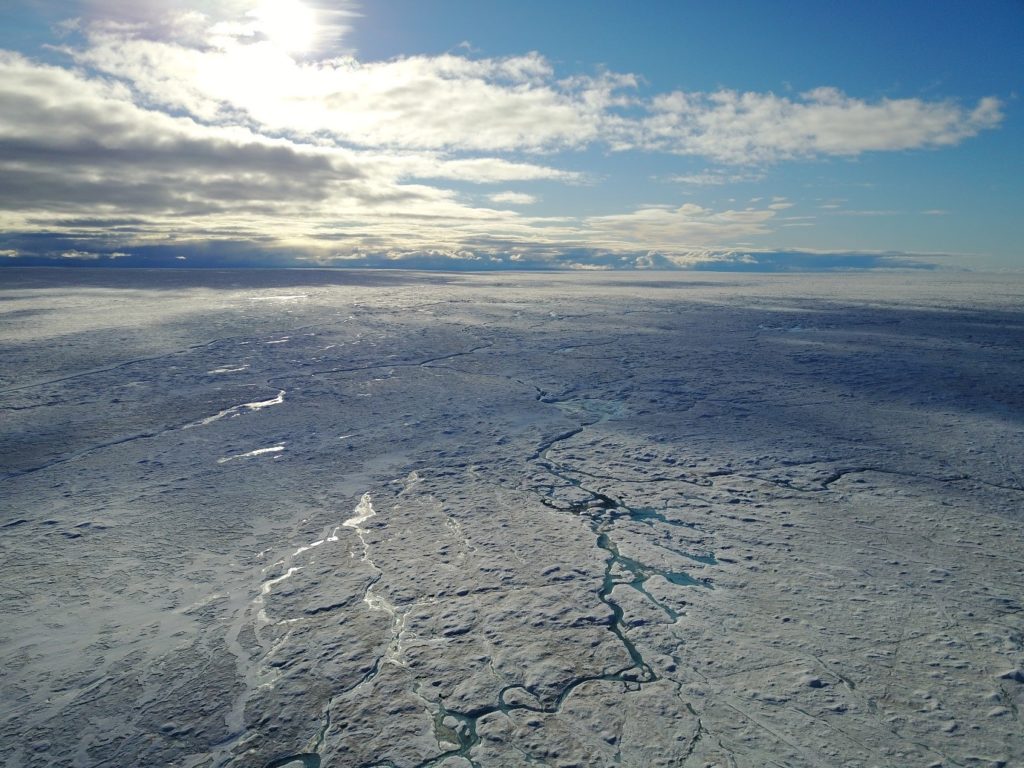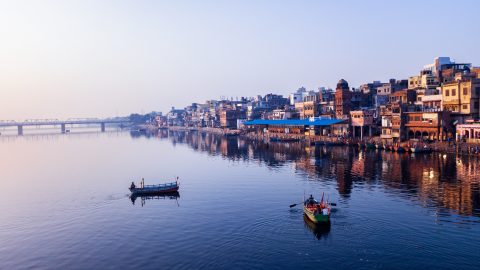How AI is helping unlock information about melting glaciers
If you were dropped in the middle of the Arctic, it’s unlikely you’d survive for long. Yet microscopic organisms make it their home – and while they are microscopic, they have a great influence over the rest of life on Earth. One scientist is using AI and drone footage to understand how these organisms are linked to the melting of the glaciers.
We know the Earth is warming. But the extent and the effect of this change is not experienced uniformly across the planet. Parts of Canada, for example, are heating up at a level more than double the global average.
The province of British Columbia has around 17,000 glaciers. They’re releasing 22 billion cubic meters of water each year. Some scientists even predict that they could have disappeared completely by 2030. Iceland has lost a glacier. This summer, warm air from a Europe-wide heatwave triggered record temperatures in Greenland – and that is only the beginning.
There is still much work to be done if we’re to understand why this is happening. That’s where Dr. Joseph Cook of Aberystwyth University in the United Kingdom, comes in. Dr. Cook, a Microsoft AI for Earth grant recipient, is a glaciologist specializing in the study of Arctic melting.
[READ MORE: Ambition is good; action is better: Making progress on our climate commitments]
Focusing on Greenland
Dr. Cook is working on some of the most intractable climate change questions. Why are things heating up the way they are? What, if anything, can be done about glacial melting? Have we already passed the point of no return?
“It can be quite difficult to stave off the disaster fatigue sometimes,” Dr. Cook says.

His focus is Greenland, home to the only ice sheet left in the Northern Hemisphere. It is melting at a rate that is contributing to a global sea-level rise of almost one millimeter per year. “It’s accelerating year-on-year,” he explains. “Most of the losses are along the southern and western margins of the ice. The rate of loss has been increasing since 1992 and it’s losing more and more mass all the time.”
[READ MORE: How AI could boost GDP and help reduce greenhouse gas emissions]
The ice is changing color, too. The snow-free surface of the Greenland ice sheet has a hard-to-miss dark stripe running along its western margins. This stripe expands and contracts as the seasons change, covering between 4% and 10% of the surface. Because darker surfaces absorb more light and heat, the darkening effect is contributing to the increase in melting.
What is behind this dark stripe? As the ice melts, algae flourish in the nutrient-rich meltwater, producing a dark brown or purple pigment. Those dark patches in turn encourage accelerated warming, which releases nutrients that feed the algae that then grow in number.
Gaining a better understanding of the causes of this darkening might help stem the tide of glacial melting, says Dr. Cook.
An eye in the sky
Using a drone with a multispectral camera, Dr. Cook’s team mapped the extent of algal coverage across a 200 meter by 200 meter area of their test site.
“We trained an algorithm to read our field spectroscopy data and classify the ice surface into discrete categories. We then trained it using satellite imagery and used this to examine an area measuring 100 kilometers by 100 kilometers. The estimates of algal coverage this provided gave us data we could use to estimate the amount of melting that could be attributed to the algae,” he says.

The Microsoft AI for Earth grant has given Dr. Cook access to high-performance computing via Azure, making it possible to run the huge calculations involved in studying much wider areas. Eventually, he hopes to be able to analyze the entire Greenland ice sheet.
Dr. Cook says there is no one-size-fits-all cause waiting to be identified: the situation in Greenland differs from the one in British Columbia or Iceland. However, on the Greenland ice sheet, one of the chief culprits is algae.
[READ MORE: How scientists are confronting environmental challenges with the help of AI]
“It’s a nested positive feedback loop – as you peel back one layer of causality, you find another waiting to be discovered, and so on. And each amplifies the harm done by the other,” explains Dr. Cook.
The question of what can be done has yet to be addressed, and whether the melting can be halted and the ice reinstated is still unclear. But the first step towards developing solutions is to gain a detailed analysis of the extent of the problem and its causes, which is what Dr. Cook and his team are working towards.
For more on how artificial intelligence is being used to monitor climate change, visit AI for Earth. And follow @MSFTIssues on Twitter.








